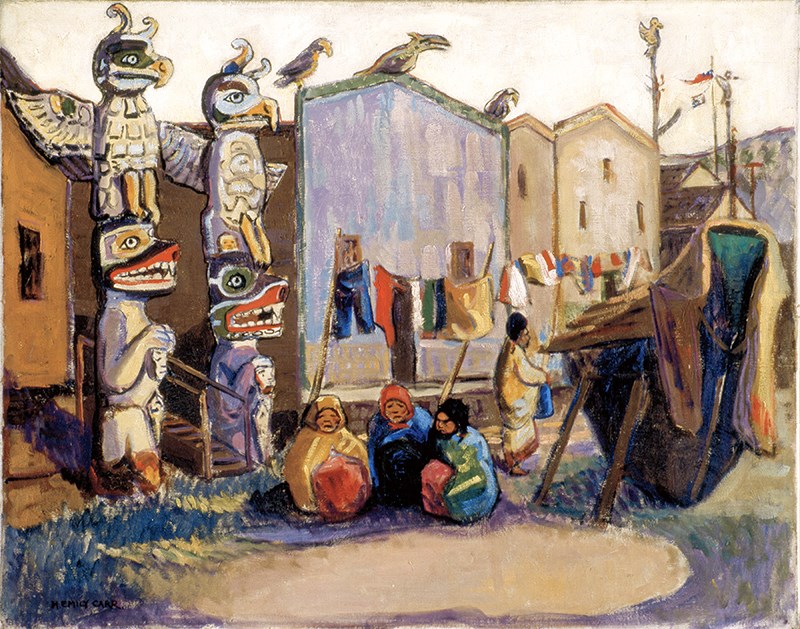Cathy Dobson
Editor’s Note: The doors open Oct. 2 at the Judith and Norman Alix Art Gallery on an exhibition billed as the most important art event in Sarnia’s history, the only Ontario stop for the internationally-acclaimed Masterworks of the Beaverbrook Art Gallery.
This is the third in a series of articles.
It’s not surprising Lord Beaverbrook purchased an oil painting by Emily Carr in 1958 and gifted it to his gallery when it opened the following year.
After all, Carr is Canada’s best known female artist, respected for her modernist painting style and determination to document the life of her province’s indigenous people.
Indian Village: Alert Bay, which she painted in 1912, comes to Sarnia as part of the Masterworks collection and promises to be one of the most admired of the 75 works on display, says JNAANG curatorial assistant Darryn Doull.
“Carr is very popular in our community and we have an Emily Carr in our public collection,” he said. “But ours doesn’t have the people and totem poles that are in Indian Village: Alert Bay.”
Between 1907 and 1913 Carr visited several remote First Nations villages and produced more than 200 sketches. In Alert Bay, she painted members of the Kwakwakka’wakw nation with their totem poles and ravens. She produced it both in oil and watercolour.
Though Carr is now highly regarded as an artist and writer she didn’t win recognition until late in life.
She attempted to make a living with her painting and opened a studio in Victoria, B.C. But the studio failed and it quickly closed in 1913. That same year, she started running a boarding house and virtually stopped painting for 15 years.
Apparently, her post-impressionist style and gender discouraged widespread interest.
“Women artists definitely had a more difficult time,” said Doull. “They still do.”
Only after Lawren Harris of the Group of Seven saw her work at a West Coast exhibition in 1927 did Carr’s fortunes changed. The two began corresponding and Harris urged Carr to paint again.
Harris was one of Canada’s most recognized painters and his encouragement led to the most prolific period of Carr’s career. She was embraced by the Group of Seven and when she died in 1945 was respected by the international art community.
“Emily Carr is now an extremely important figure to Canadian art history,” said Doull. “And Indian Village is a really important document of her time in Alert Bay.”





